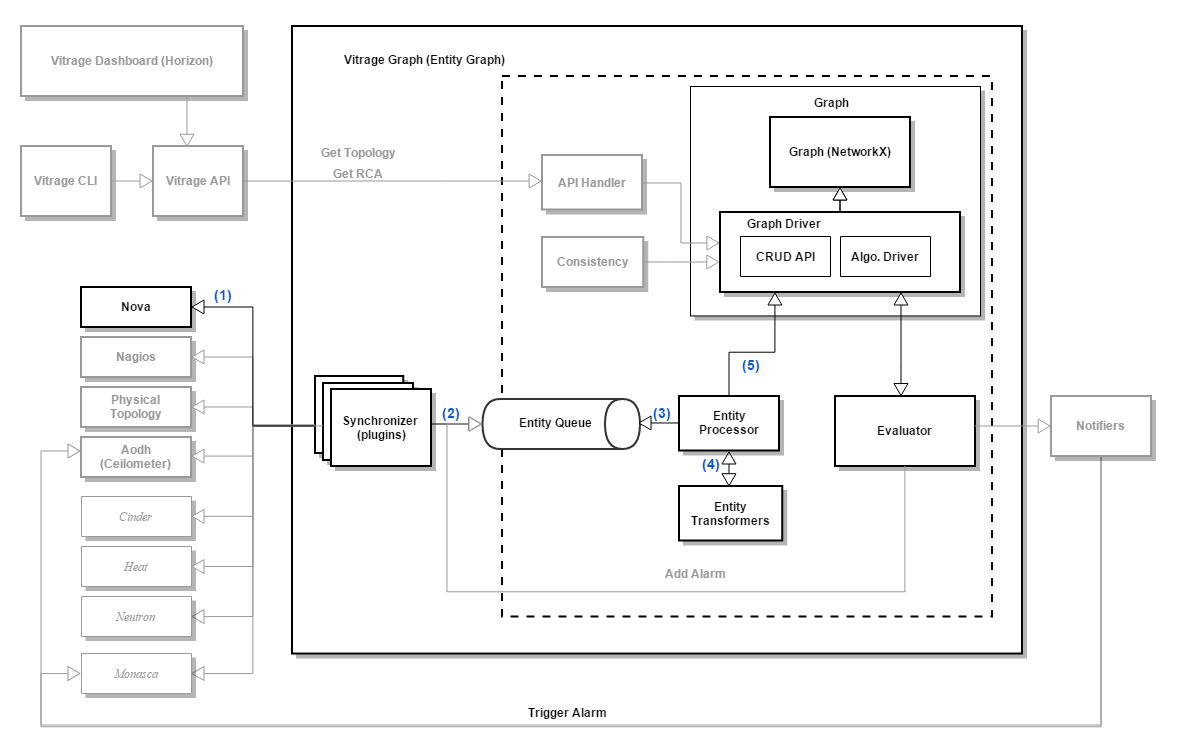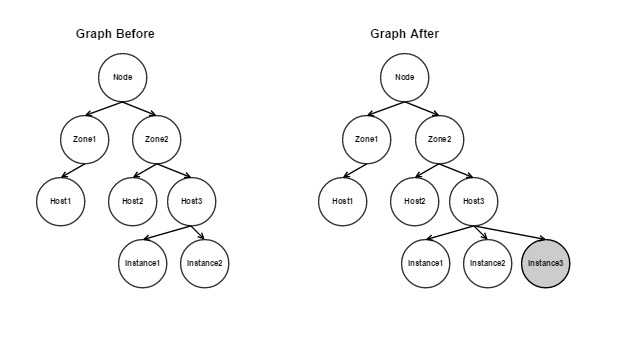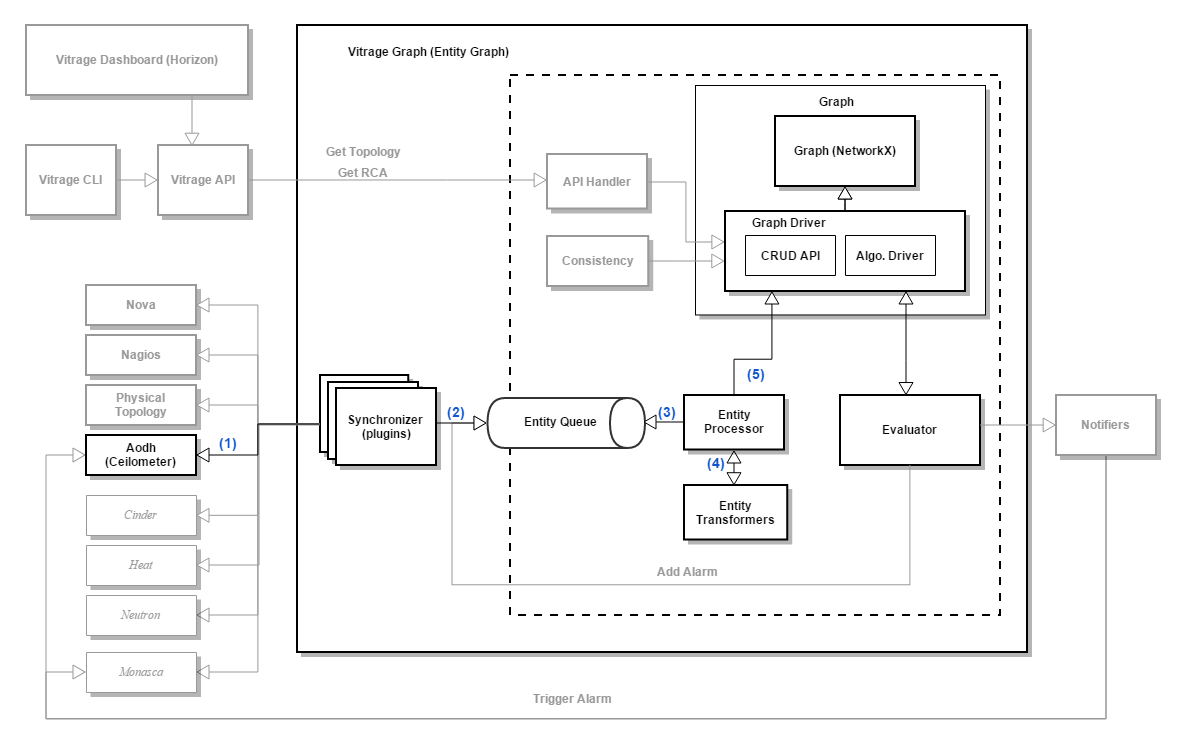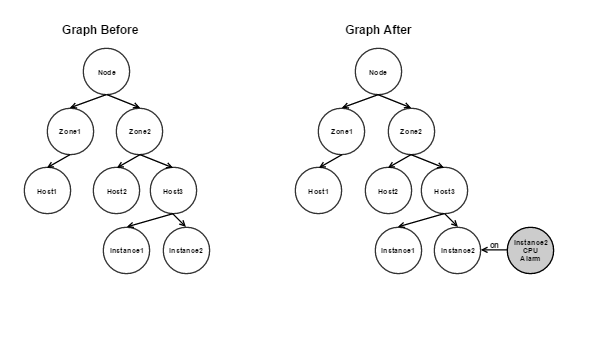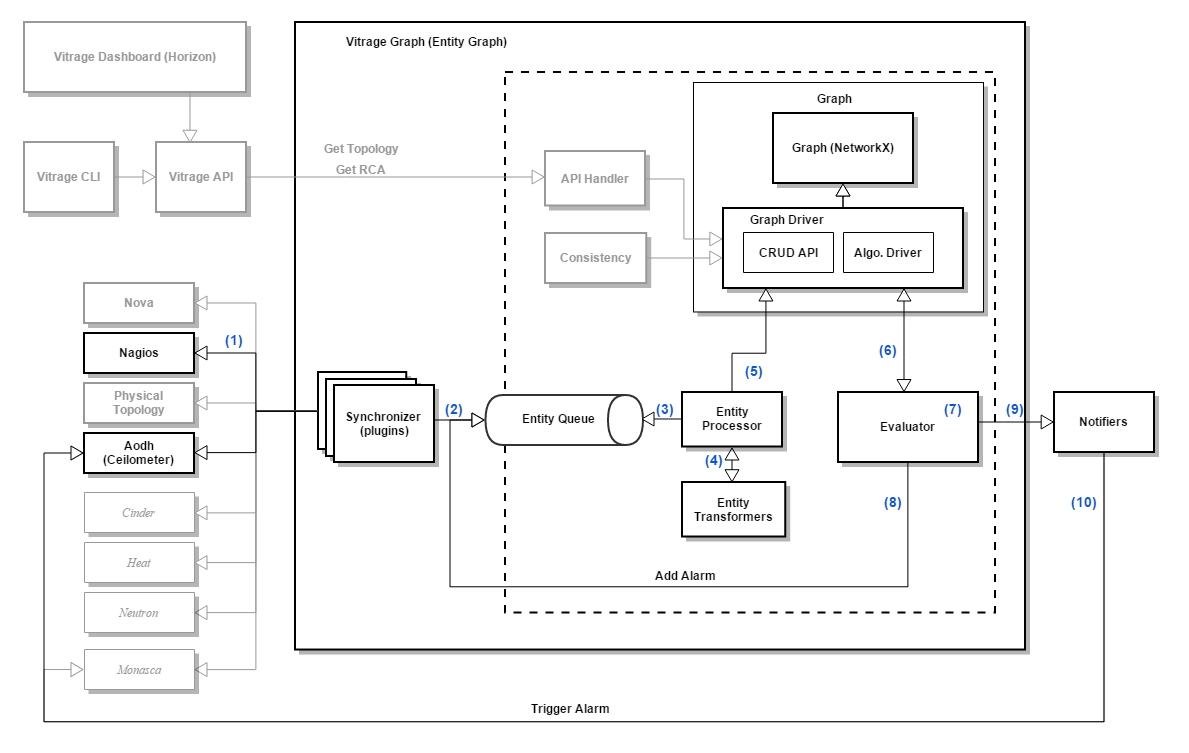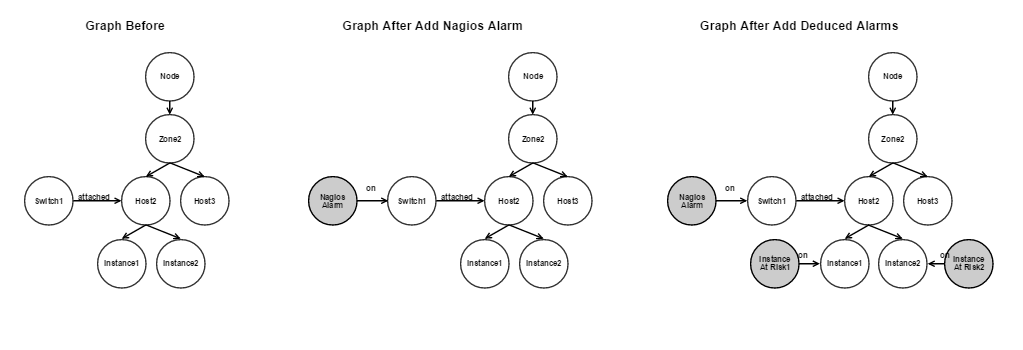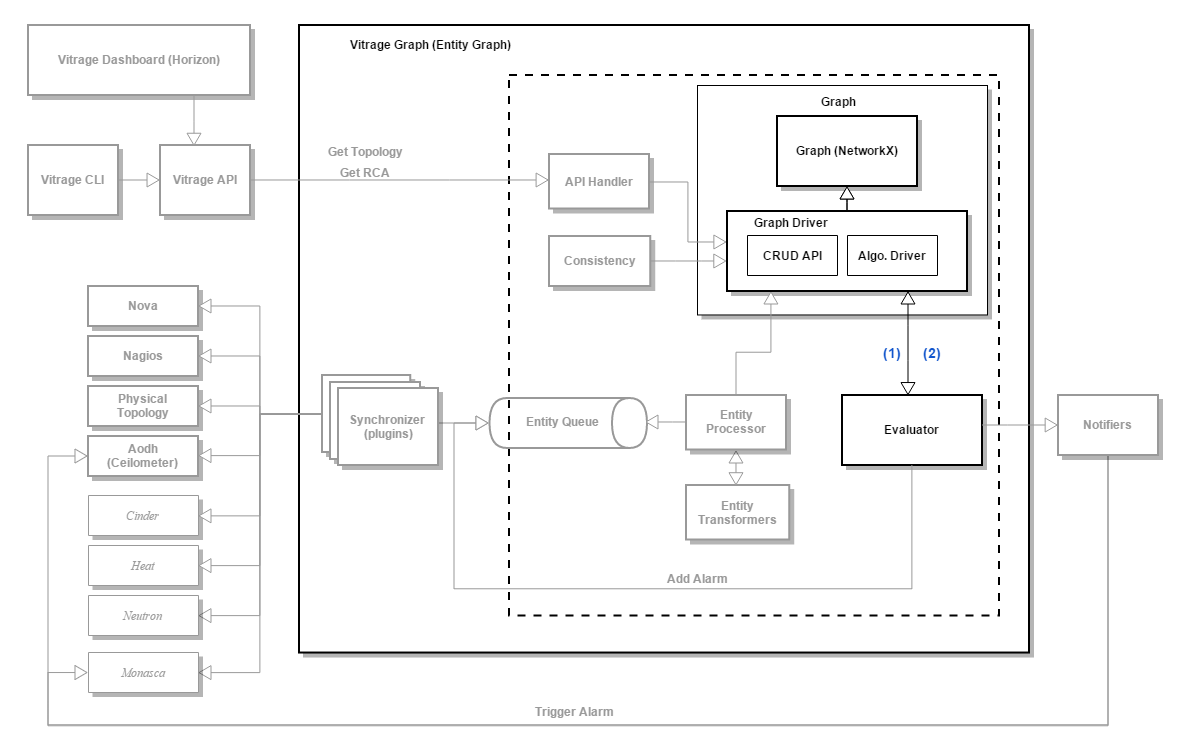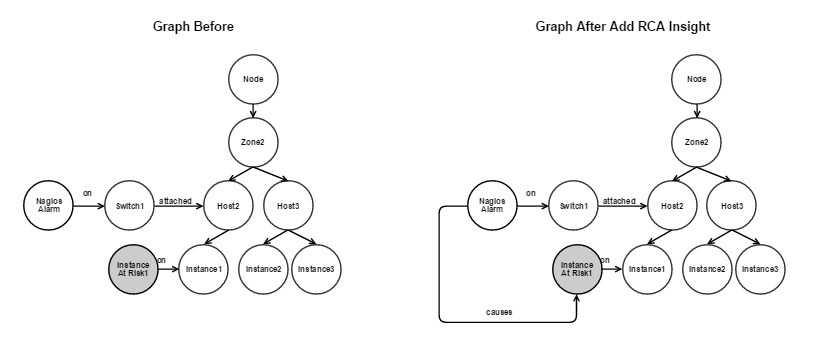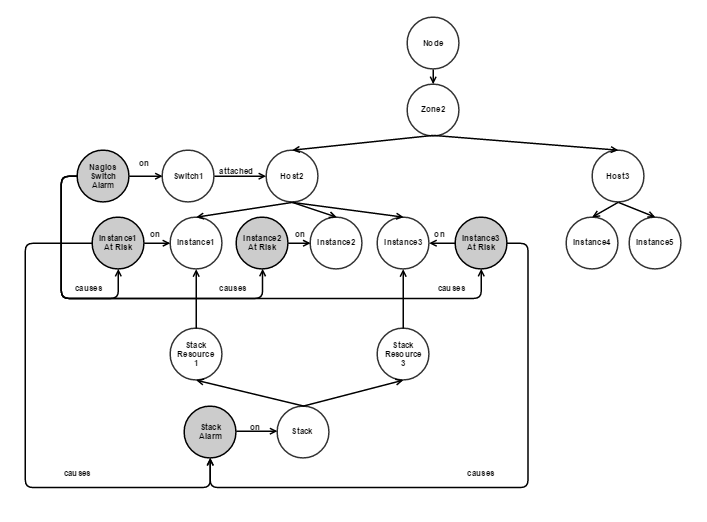2.9 KiB
2.9 KiB
Vitrage Use Cases
Add Nova Instance
- Nova Synchronizer plugin queries all Nova instances, or gets a message bus notification about a new Nova instance
- Nova Synchronizer plugin sends corresponding events to the Entity Queue
- The Entity Processor polls the Entity Queue and gets the new Nova Instance event
- The Entity Processor passes the event to the Nova Instance Transformer plugin, which returns a Vertex with the instance data, and an edge to the host Vertex in the graph
- The Entity Processor adds the new vertex and edge to the Graph
Add Aodh Alarm
- Aodh Synchronizer plugin queries all Aodh alarms, or gets a notification (TBD) about an Aodh alarm state change
- Aodh Synchronizer plugin sends corresponding events to the Entity Queue
- The Entity Processor polls the Entity Queue and gets the Aodh Alarm event, for example threshold alarm on Instance1 CPU
- The Entity Processor passes the event to the Aodh Alarm Transformer plugin, which returns a Vertex with the alarm data, and an edge to the instance Vertex
- The Entity Processor adds the new vertex and edge to the Graph
Nagios Alarm Causes Deduced Alarm
- (steps 1-5) Nagios Synchronizer plugin pushes a nagios alarm on a switch to the Entity Queue, which is converted by Nagios Transformer to a vertex and inserted to the Graph
- The Evaluator is notified about a new Vertex (Nagios switch alarm) that was added to the graph
- The Evaluator performs its calculations (TBD) and deduces that alarms should be triggered on every instance on every host attached to this switch
- The Evaluator pushes alarms to the Entity Queue
- The Evaluator asks the notifier to notify on these new alarms
- Aodh Notifier creates new alarm definitions in Aodh, and sets their states to "alarm"
Create RCA Insights
- The Evaluator is notified of a new alarm.
- The Evaluator evaluates the templates and the Graph (TBD), and decides that there is a root cause relation between two alarms. It adds a "causes" edge to the Graph
Note that in future versions the graph with RCA information may become more complex, for example:
